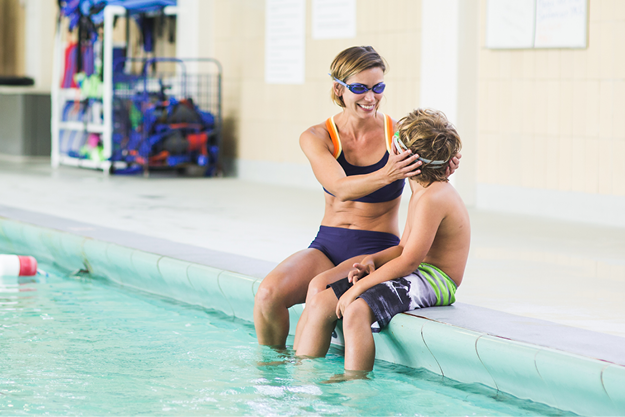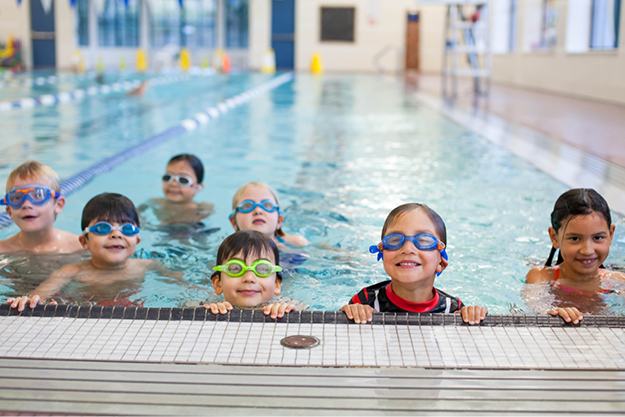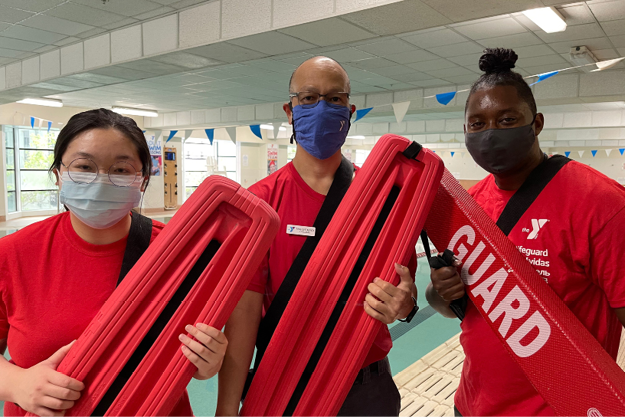A Guide to Water Safety, Swim Lessons and Auditing Lifeguards
As time changes once again and the days are getting longer, Spring is the perfect time to start going to your favorite Y pool or local beach again. But before you do, there are several water safety rules involved when it comes to youth being near water - wearing sunscreen, don't walk or run, no pushing or jumping, etc. But at the Y, there's one rule that outweighs all others.

Never get in the water without an adult's permission.
Teaching children this rule from a young age helps keep them safe by always alerting you or another adult when they intend to wade, swim or even take a bath. You can repeat this water safety rule to them each time you enter the water together by simply saying, "ask permission before you get into the water." If you make this part of the process of swimming, it's more likely to become a habit for children.
While water safety rules are important to understand and know, swimming in itself is an essential skill.

No matter what the circumstances, we believe that everyone deserves access to water safety classes.
Each year, we provide Swim Lesson Financial Aid to ensure that families have the skills they need to keep themselves safe. In the Y's Swim Basics Program (Stages 1-3), students learn a sequenced set of skills over eight lessons, reducing their risk of drowning. As for Y Swim Lessons, there are 3 categories:
- Swim Starters: develops water enrichment and aquatic readiness in children ages 6 months to 3 years. This category focuses on developing swim readiness skills through fun and confidence-building experiences. Parents also learn how to supervise children in the water, how to prevent accidents and how to plan for emergencies.
-
Swim Basics: develops personal water safety and basic swimming skills in students of all ages. Swimmers develop a high level of comfort in the water by practicing safe water habits, engaging in underwater exploration, and learning how to swim to safety and exit if they fall into a body of water.
-
Swim Strokes: introduces and refines stroke technique in older students (school age, teens and adults). Having mastered the fundamentals, students learn additional water safety skills and build stroke technique, developing skills that prevent chronic disease, increase social-emotional and cognitive well-being and foster a lifetime of physical activity.
Financial Aid information can be found at ymcasf.org/financial-assistance.
Lastly, we believe it's imperative that we are prepared to recognize and act swiftly and appropriately to any emergency we may encounter to provide a safe place for all of our members. One way of ensuring we are prepared is by regularly auditing facilities' emergency action plans (EAP). While all staff at the YSF are responsible for safety Lifeguards are, in many cases, the only staff whose sole responsibility is to keep people safe.

Creating a culture where lifeguards feel empowered and celebrated is one of the most effective and direct ways to improve member safety.
An empowered guard will be ready to respond at the first sign that something is potentially wrong - not wait until they have confirmed that it’s a genuine emergency, and audits help us identify those guards who are hesitant so we can help them develop and grow. As members, you can help us honor, support, empower and celebrate our lifeguards and their contribution to our aquatic community the next time you see them participating in an audit, responding to an emergency, or even just vigilantly scanning their assigned body of water. Our main goal is to keep you, your family and all members in our community as safe as possible.
If you ever have further questions regarding our aquatics policies and procedures or something you notice at one of our pools, please reach out to Courtney Wheelock at CWheelock@ymcasf.org .